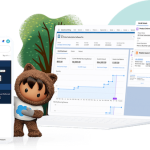Chris Jordan is Director of Data, Personalisation and Marketing Intelligence, ASEAN. He consults with key strategic customers around the use of data and technology, specifically in the context of digital marketing. In the first of a two-part series on data, Chris discusses how marketers should adapt their data-driven marketing strategies in response to privacy updates from Google and Apple.
Thomas Kuhn, a brilliant philosopher, coined the term paradigm shift. He used it to describe the disorientation that people feel during times of social change. As marketers, we are most certainly going through a phase of social bewilderment, as we revolutionise the way we think about digital and data.
Third-party cookies are on the way out
Consumers have spoken up about privacy and security, and the big players are listening.
In January 2020, Alphabet Inc., Google’s parent company, announced that it plans to eliminate the third-party cookie. This is a key tool that marketers have used for years to track customers’ online activities and deliver personalised ads. Google’s cookie alternative, called Federated Learning of Cohorts (FLoC), is still in the works.
Meanwhile, Apple rolled out AppTrackingTransparency this year. This new feature requires apps to ask users for permission to track their activities across other companies’ apps and websites.
So, how do we manage data-driven marketing and the personalised experiences that consumers have come to expect? This is challenging in a world where locked off data in big consumer platforms like Google and Facebook is only increasing, and governments are curtailing marketers’ data collection processes.
Healthy and not-so-healthy data
I like to think of data as an ecosystem, much like the human body.
We fuel our body with a healthy balanced diet, and in return, our body operates at maximum capacity. Data is much the same, hence the age-old IT saying, ‘rubbish in, rubbish out’.
So, how can we marketers learn from diet? Well, much like diet, data is based on quantity and quality. Eat too much of the bad stuff, and your health will suffer. Consume the right amount of the good stuff, and your health will prosper. We all know that cookies are not good for our health, but sometimes we can’t help ourselves.
Here’s what a healthy data diet looks like:
- Fresh: Much like produce, new data trumps old data. We need the data we collect to be recent and relevant.
- Clean: Organic food has proven to be healthier, and much like this, those nasty additives are not going to make for a healthy data ecosystem. We need clean, de-duped first party data.
- Trusted: When we know where food is made and what went into it, we trust it. Data is much the same, we need permission to collect and use it with total transparency.
The value exchange between businesses and customers
The trick to long-term health success is typically ‘balance’, and the same will apply to our evolving data strategies.
Whilst AppTrackingTransparency is new and Google’s action plan is still up in the air, right now the best bet is balance. Think about how to collect fresh, clean, and trusted first party data.
This starts by asking your customers or prospects for their permission. Explain in non-legal language that providing this data, explicit consent, and preferences will create personalised and relevant experiences across any channel.
Once collected, we need to connect the data, across ecosystems and internal silos. The idea sounds simple but can create incredible complexity. This exact challenge has given rise to a new MarTech category: Customer Data Platforms (CDP). Martin Kihn, Senior Vice President of Product Strategy for Marketing Cloud, explains what a CDP is and why it matters, in his insightful article.
Once this data has been captured and connected, we can use it to master the next big thing in marketing. Seth Godin, who spoke in the Salesforce Live: Asia marketing episode, noted that this big thing is already here:
To quote Adam Grant’s latest hit book, we need to ‘Think Again’, and reframe how we think about the constitution of healthy data. Keep your eyes peeled for part two, in which we dig into ‘activating healthy data’.
To learn more about future marketing trends from thought leaders like Seth Godin, watch the marketing Trailblazers episode of Salesforce Live: Asia.

























